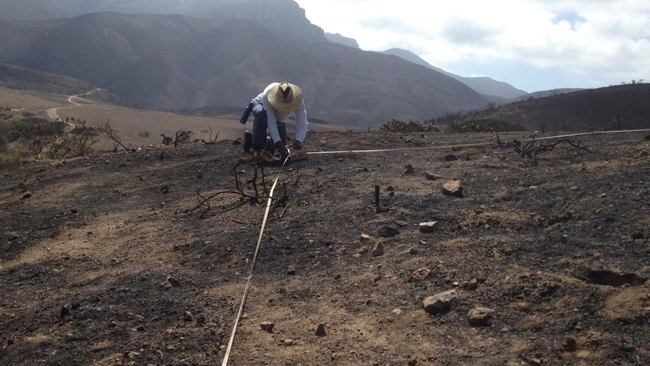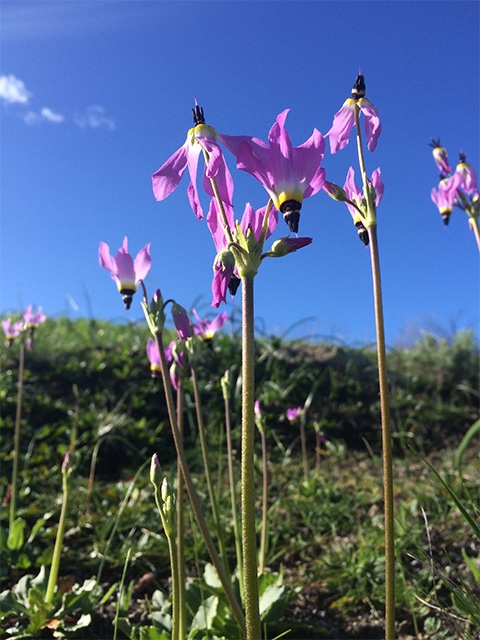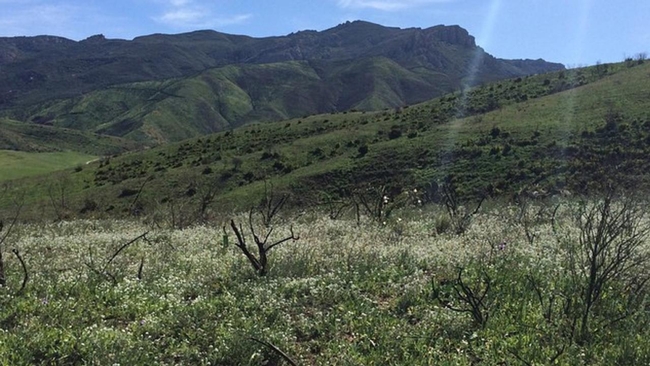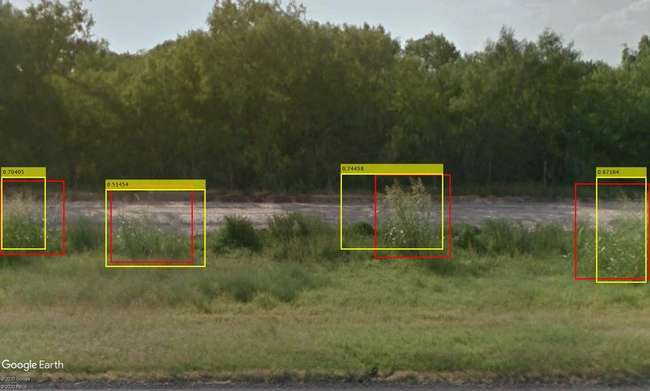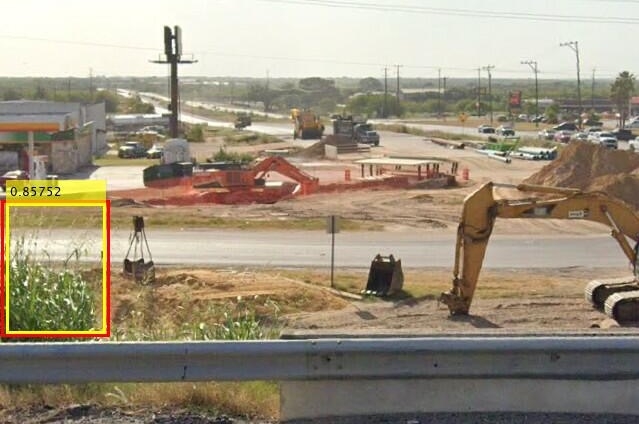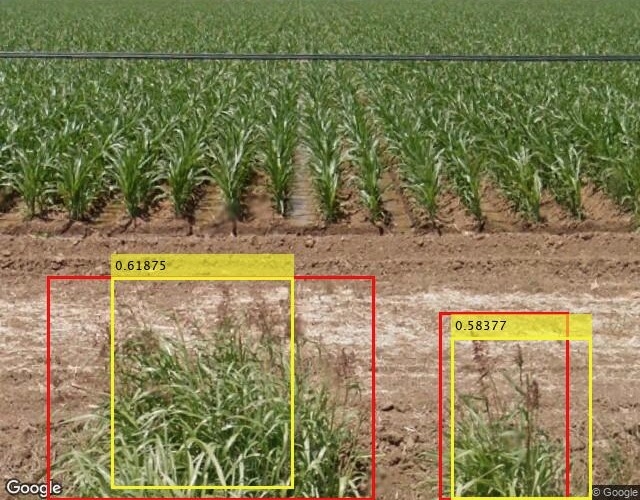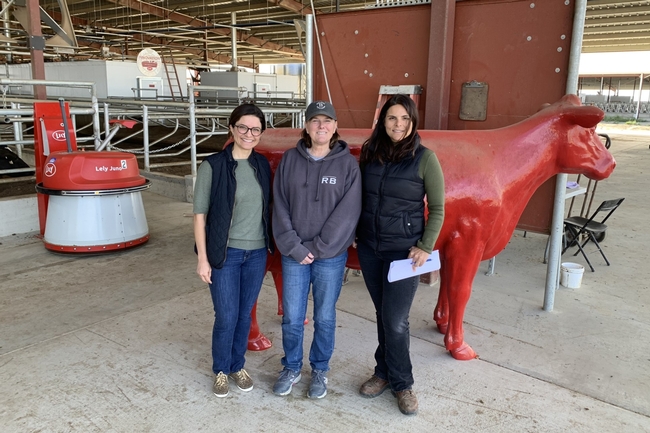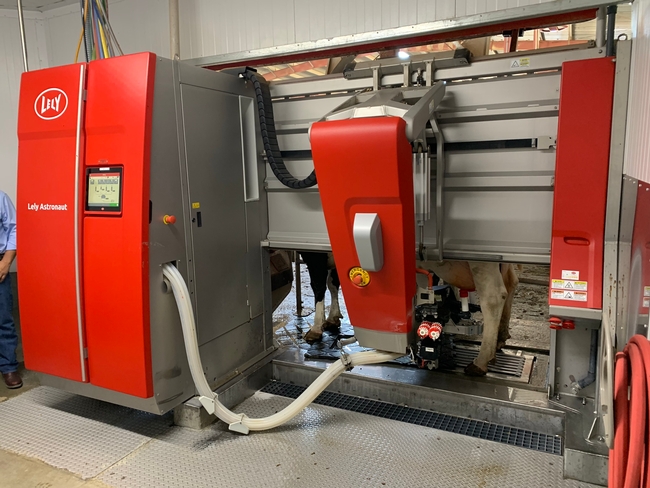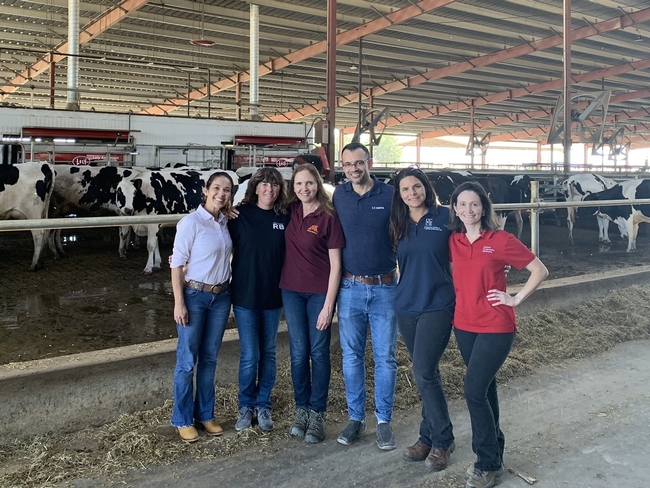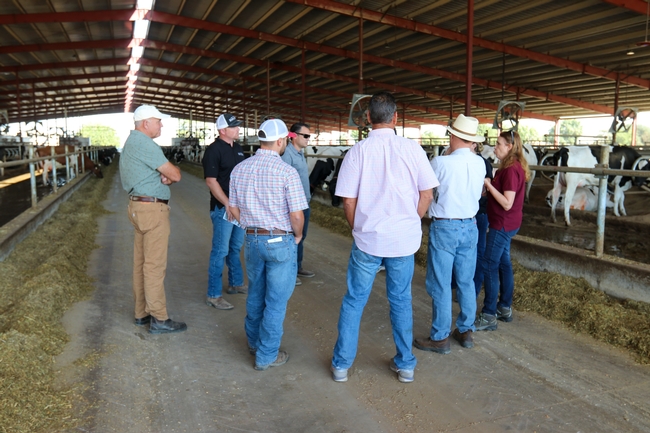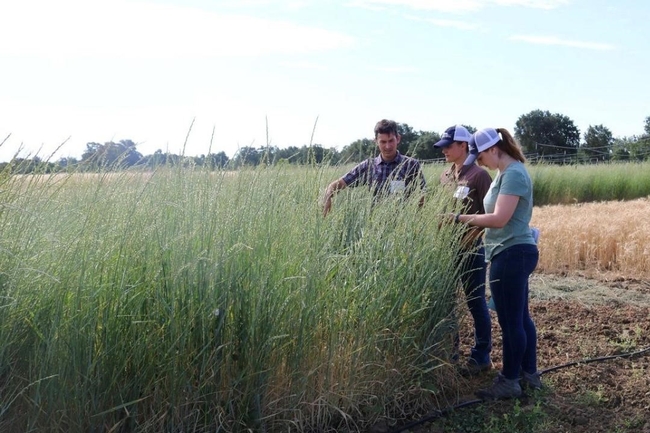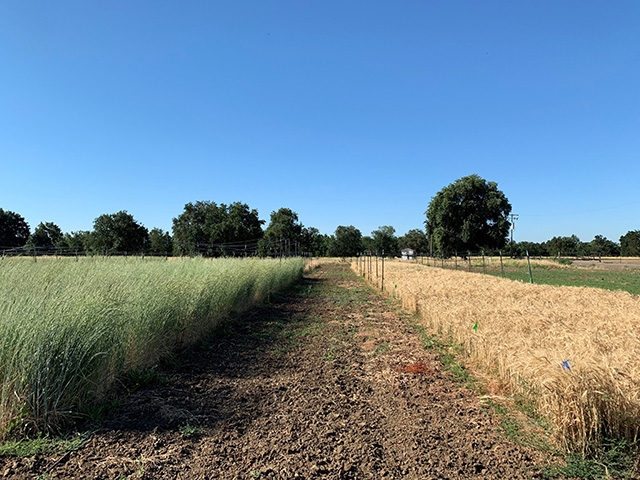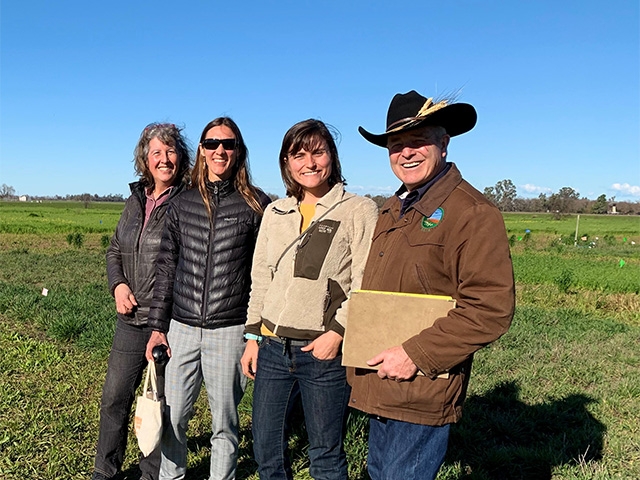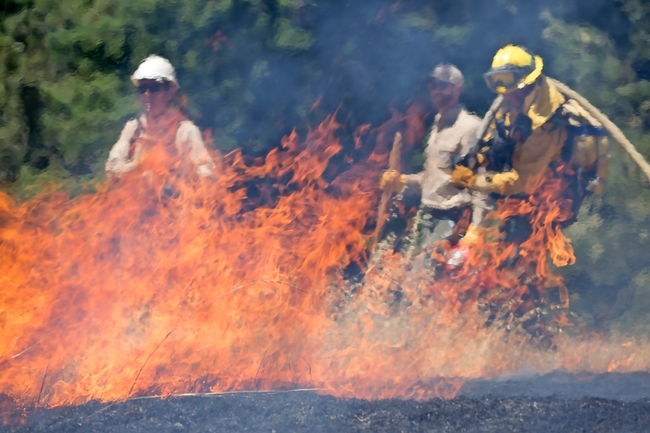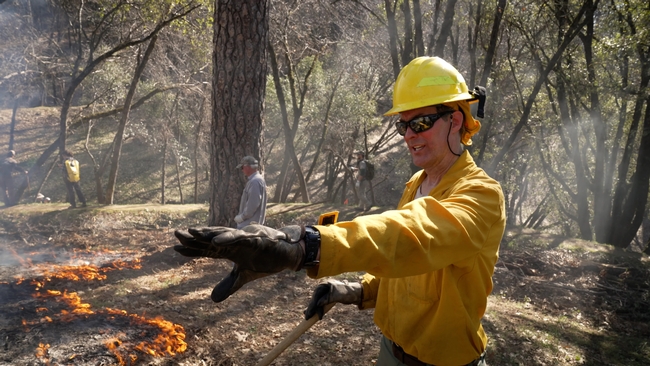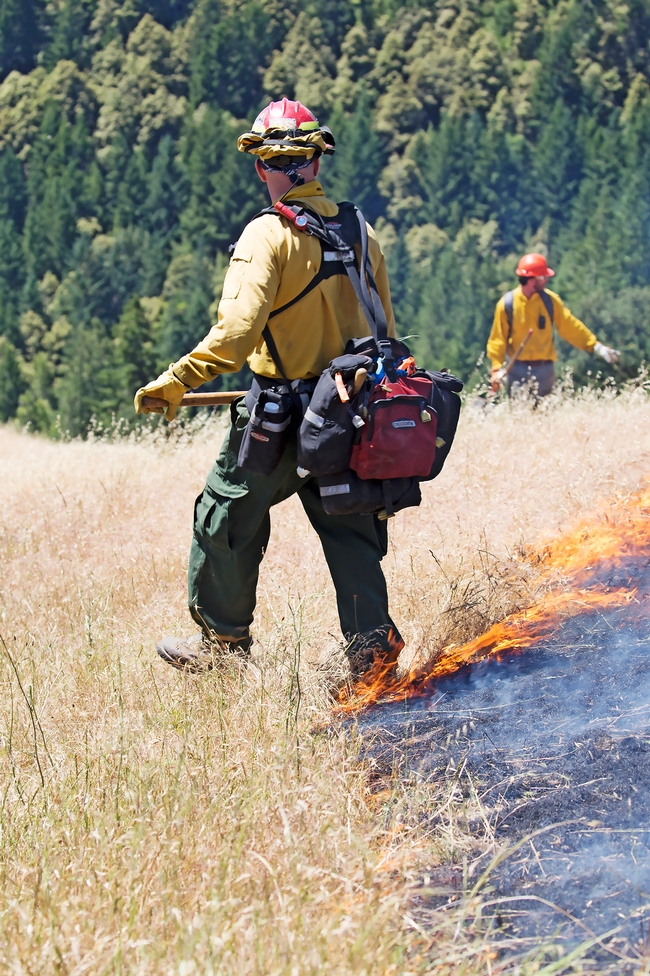Posts Tagged: uc davis
Car fumes, weeds pose double-whammy for fire-loving native plants
Wildflower displays threatened
Northwest of Los Angeles, springtime brings native wildflowers to bloom in the Santa Monica Mountains. These beauties provide food for insects, maintain healthy soil and filter water seeping into the ground – in addition to offering breathtaking displays of color.
They're also good at surviving after wildfire, having adapted to it through millennia. But new research shows wildflowers that usually would burst back after a blaze and a good rain are losing out to the long-standing, double threat of city smog and nonnative weeds.
A recent study led by Justin Valliere, assistant professor in the UC Davis Department of Plant Sciences, found that native wildflowers and other plants that typically flourish following a fire were, instead, replaced by invasive plants on land that received the kind of nitrogen contained in vehicle emissions.
“Many native plants in fire-prone areas rely on fire, and some are entirely dependent on it. Some are even most abundant after a fire,” said Valliere, a UC Cooperative Extension specialist in invasive weed and restoration ecology. “But we found that these fire-following species may be especially vulnerable to the combination of nitrogen pollution and invasive plants.”
That's part of the reason why native plants in these mountains have been declining.
Seeds – banked in the soil and waiting to sprout
The problem faced by native plants can be compared to a drawn-down bank account: Funds withdrawn are not being replaced.
It starts with fire, an important ecological process, Valliere said. Flames burn through plants on the surface and return their nutrients to the soil. Seeds sleeping in the ground wait for the next rain to sprout, then use those nutrients to grow.
“Plant diversity is often highest in growing seasons immediately after a site burns,” he said.
But invading plants have many advantages over native ones. They often sprout earlier, grow faster and create more seeds, all while tolerating drought.
“They're like cheaters,” Valliere said. “They don't follow the same rules.”
Nitrogen, too, is an important piece of every plant's nutrition. They all get a fertilizing boost from nitrogen that floats up in vehicle emissions and falls to the ground. But the invaders use nitrogen and other nutrients to grow faster, winning the race for water and sunlight. As a result, fewer native plants reach maturity, producing fewer seeds that keep their populations thriving.
When the bank balance reaches zero
The 2013 Springs Fire gave Valliere a unique opportunity to study the combined impacts of wildfire and extra nitrogen. He and colleagues from UC Riverside and the National Park Service created test plots in the Santa Monica Mountains where the fire had burned. Then, they added nitrogen to the soil to mimic the amount and type that LA's smog would deposit. Over the study's three years, native plants that typically would have flourished after wildfire instead declined even faster in the plots with added nitrogen.
Native seeds sprouted, but didn't flower. Over time, the soil's bank of seeds drew down.
“Each seed has one chance to flower and reproduce,” Valliere said. “If a seed grows and gets outcompeted, that seed has lost its chance to replenish the seed bank.”
Without the chance to replenish their bank account, native plants will die out, and the whole ecosystem will be thrown out of balance.
“There is inherent value in biodiversity,” Valliere said. “These invasive weeds could prevent the re-establishment of native shrubs after fire, sometimes forever altering the plant community.”
The loss of native plants can have cascading effects on the larger environment, he added. Problems can include the loss of native bees that feed on the flowers, and mudslides when rain makes hillsides unstable.
This problem is likely to repeat in similar areas where biodiversity is highest after wildfires – including parts of the Mediterranean basin, southern Africa and Australia. The addition of city smog “could have serious consequences for the biodiversity of fire-prone ecosystems worldwide,” Valliere warned.
Read the paper, “Nitrogen deposition suppresses ephemeral post-fire plant diversity,” by Justin Valliere, Irina Irvine and Edith Allen.
This article was first published on the UC Davis Department of Plant Sciences website.
Google Weed View? Professor trains computer to spot invasive weed
Algorithm for AI enables low-cost tracking of invasive plant
To manage johnsongrass, a noxious weed that crowds out cotton and sickens horses, farmers have tried herbicides, burning and hand-pulling. Now, researchers at University of California, Davis, have developed a more high-tech weapon against the invasive weed: artificial intelligence and machine learning.
Using photos from Google's Street View database, UC Davis researchers have tracked down over 2,000 cases of johnsongrass in the Western United States for a fraction of the cost and time that it would take to do drive-by or other in-person surveys. They call their tool Google Weed View.
The advancement could help land managers easily and quickly survey for other problem plants.
“Once the model is trained, you can just go and run it on millions of images from Google Street View,” said Mohsen Mesgaran, an assistant professor in the Department of Plant Sciences at UC Davis. “We have huge flexibility, and its capability can be scaled up very quickly.”
The technique can easily be extended to other plant species. All that is needed is to label the new item in Street View photos and train the algorithm to identify that object in the images.
By providing location information, Google Weed View also offers an opportunity to examine how climate affects the growth and spread of weeds and invasive plants at very large scales.
“I think it can be both useful for management and for people with interests in more basic questions in ecology,” Mesgaran said.
A colleague's query
Mesgaran began looking at using Google's photo database of roadways, streets and highways after Kassim Al-Khatib, a professor of Cooperative Extension in the same department, asked if he could survey Western states for johnsongrass.
Al-Khatib studies where johnsongrass grows, ways to manage it and how this perennial has evolved to be so prevalent and resilient. He's also working with scientists at the University of Georgia to decode the genome of johnsongrass, which is one of the top 10 most invasive weeds worldwide.
Johnsongrass can crowd out native plants, harbor pathogens and affect agriculture. It grows up to 7 feet tall with flowers that are green, violet, dark red or purplish brown depending on maturity, according to a UC Statewide Integrated Pest Management Program briefing page.
“Johnsongrass is a major weed not just in California but worldwide,” Al-Khatib said. “It's very difficult to control. It's a problem on vineyards. It's a problem for cultivated crops. It's a problem on orchards.”
Google Weed View allows for rapid, convenient scanning. It is continuously updated via everyday users with compatible cameras and images collected by Google. “Instead of a day of in-person driving, we can use AI to determine if johnsongrass is in a county or not,” Al-Khatib said.
Setting the parameters
To find the weeds, Mesgaran went to Google Street View, which hosts billions of panoramic photos. It didn't take long to find johnsongrass.
“The pictures are really good quality,” he said. “You can see plants and flowers.”
Street View's photos offer a 360-degree view, so in his request Mesgaran set parameters, based on street direction (bearing), to only see the side view. He also specified latitude and longitude, and other factors. To train the deep, or machine learning model, he chose Texas, where johnsongrass is prevalent.
A student sorted through over 20,000 images from that request to find pictures with johnsongrass and drew rectangular shapes around the weeds. They located 1,000 images.
The labeled photos were fed into a computer to train a deep learning algorithm capable of identifying johnsongrass in Google's images. The model was run again to capture potentially more images containing johnsongrass. These additional images were then labeled and used to further refine the model. With each iteration, the algorithm learned and became more accurate.
“This deep learning model was trained by these images,” Mesgaran said. “Once we had a semi-working model, we ran it against about 300,000 images.”
For Al-Khatib's request, researchers focused on 84,000 miles of main roads in California, Nevada, Oregon and Washington states. The team discovered 2,000 locations with johnsongrass.
Google Weed View cost less than $2,000 to purchase the images and teach the model. A traditional car survey to cover the same area would cost an estimated $40,000 in gas, hotel, food and other costs.
“In a matter of months, we came up with 2,000 records and I can do it for the whole U.S.,” Mesgaran said.
Next up? The entire United States.
This story was originally published on the UC Davis College of Agricultural and Environmental Sciences news site.
UCCE advisor Bruno guides, learns from dairies switching to milking robots
Automatic milking systems increasingly used in California amid labor challenges
When third-generation dairy farmer Shonda Reid first saw a milking robot at a farm show 13 years ago, she immediately recognized that the technology represented the future. Her father, however, took a bit more convincing.
“I came home and showed him and said, ‘This is what we need to do.' And he thought I was kidding!” said Reid, dairy and farm manager for Fred Rau Dairy, which has a herd of 1,400 milk cows in Fresno County.
Years later, after the family had visited several dairies using automatic milking systems (AMS) across the U.S., they installed their first six robots in November 2021. By fall 2022, they had 24 robots, evenly split between two newly built “free stall” barns where the cows can freely go to the milking machines.
As Fred Rau Dairy was one of the first in California to implement AMS at such a scale, Reid and her team have been instrumental in growing practical knowledge on these systems. She also has been a valued partner to Daniela Bruno, University of California Cooperative Extension dairy advisor for Fresno, Madera and Kings counties.
“Automatic milking robots are not a new technology, but it's new to California,” said Bruno, noting that the milking robots were first used on small, family-run farms in Europe, where the technology granted family members more time for rest and other pursuits.
To better understand the feasibility of milking robots for large dairies in California, Bruno – alongside former UC Davis School of Veterinary Medicine professor Fernanda Ferreira, University of Minnesota researcher Marcia Endres and other collaborators – began a project in 2020 to study the risks and opportunities of automated systems.
“The information is extremely useful for California producers to make informed decisions about implementing AMS on their facilities,” said Denise Mullinax, executive director of the California Dairy Research Foundation, which supported the effort through a competitive grant. “Cow care, labor requirements and profitability are key issues for producers, and CDRF was pleased to support this project which assists producers in understanding how AMS may impact those areas on their facility.”
Dairy farmer: ‘We needed to make some changes'
The project produced a paper analyzing existing research on automatic systems, which have been more widely used in the Midwest, where there are more small-scale, family-run dairies. In 2020, there were only 14 “box robots” in California, according to Bruno. Now there are about 200 across California – and both Bruno and Reid cited labor challenges as the primary reason for the increased use of automated systems.
“California suffers from labor quality and quantity issues,” Bruno said. “By bringing robots to California, you can minimize those problems.”
Higher costs of hiring and retaining employees, driven in part by new labor laws, are one factor. And then there's the reliability and availability of labor, as fewer people are willing to do the physically demanding work of conventional milking.
“People just don't want to milk in a flat barn [a conventional setup where the employee works at the same level as the cow] – there's a lot of kneeling, squatting, that type of thing – it's pretty tough on the body,” Reid explained.
Faced with labor shortages and mounting regulatory burdens, Reid said Fred Rau Dairy had to make the leap to automated systems to keep the 80-year-old dairy operation running.
“We needed to make some changes, or we're going out of the dairy business,” she said.
In a survey conducted by Bruno and her colleagues of large dairies using AMS across the U.S., a majority of the 29 respondents reported reductions in labor costs – but survey results did not offer a definitive picture on whether AMS improved bottom-line profitability.
Calmer, healthier cows
Nevertheless, most of the survey respondents said they were generally happy with their transition to automatic systems.
“It's totally met our expectations, and cow health has gotten much better, too,” Reid said.
In a typical conventional system where cows are outside in “open corral” pens, dairy employees must cajole the cows into the milking parlor. But within a “free stall” barn where the cows can voluntarily go to the milking robots when they want, as often as they want, the animals are much less stressed.
“When you think about cow handling, if you have robots, you don't have anybody pushing and screaming at them to walk to the parlor,” Bruno explained. “You have less cow-people interaction so they are more calm; there is less stress.”
In the survey of large dairies using milking robots, more than 90% of the respondents said their cows were calmer. Reid also noted that many people have noticed how calm their cows are in the free stall barns.
“They're not skittish, you can walk in and they don't run,” Reid said. “They'll just watch you or they'll even come up and start licking on your jacket or shirt.”
Bruno also said that many of the large dairies reported fewer cases of mastitis and other diseases, less lameness, and greater milk production. But she added it's hard to know whether the benefits can be attributed to the robots and their real-time monitoring technology – or to changes in the physical environment (cows save energy in the free stall barn setup, versus the open-corral system that requires walking to the milking parlor).
Dairy producers seek counsel on potential transition
Less bovine travel from outside to inside was a boon for Fred Rau Dairy during last year's unusually wet winter.
“Even if it's just a couple of weeks of rain, that mud and manure and everything – you do what you can, but oh my gosh – it's a mess,” said Reid, noting that easier facility maintenance during extreme weather was another benefit of switching to automatic systems within free stall barns.
Reid shared many of her experiences with attendees of an AMS Field Day in October 2022, arranged by Bruno, Ferreira and their collaborators. About 60 farmers, researchers, industry representatives and consultants visited Fred Rau Dairy and Jones Dairy in Merced County.
If a dairy producer is considering implementing automatic systems, Reid recommends that they research all their options, visit dairies that use the systems, and check who in their area would be providing service and technical support.
And there are crucial workforce considerations, as dairy workers must learn an entirely new set of skills and processes. Instead of spending their time fetching the cows, prepping them and milking them in the parlor, workers might need to gather and interpret data from the robots. “Cow people,” as Reid puts it, must become computer people.
“You have a group of people who have been with you for a while, and you hope that they can transition to the new technology of what you're doing,” Reid said.
During this technological transition, and on the myriad other challenges that dairy operators face, Reid said she is grateful for Bruno's expertise and responsiveness.
“If there's something that I need, she's been really good about trying to help – or putting me in contact with the right people,” she explained. “I've enjoyed working with her.”
The AMS project team also includes UC Davis School of Veterinary Medicine professor Fabio Lima, postdoctoral researcher Thaisa Marques and former postdoctoral researcher Camila Lage.
No-till annual wheat better for soil health in California’s climate
One more reason to adopt sustainable cultivation
California wheat farmers could both maintain their yields and improve soil health by growing annual wheat without tilling the soil year after year.
This could be one more encouragement to farmers to adopt a sustainable practice commonly called conservation tillage, no-till or minimum-till cultivation, impacting how we grow a grain that supplies about 20 percent of the calories and protein for people around the world.
A new study, by a team led by Mark Lundy, University of California Cooperative Extension specialist in UC Davis' Department of Plant Sciences, offers new insight for decades-long discussions around soil conservation, sustainable agriculture and climate-warming emissions related to growing our food. The study has been published in the journal Soil and Tillage Research. For the first time, researchers have shown that annual wheat that is not tilled each year is better for stashing carbon in the soil than perennial wheatgrass, while still yielding more crop in Central California.
Previous studies have looked at annual wheat that is tilled each year, annual wheat that is not tilled, and a cousin species, perennial intermediate wheatgrass (trademarked Kernza), which also is not tilled. But until now, no one has looked at all of the benefits and trade-offs together. Most importantly, “no one has ever controlled for tillage,” Lundy said. “And, no one has compared annual wheat to perennial intermediate wheatgrass over multiple years in a Mediterranean climate, which is what we have in California.”
This study also is unique because it delves into the deeper question of what is going on in the soil that drives the different results for carbon there. Soil carbon reflects various processes linked to plant activity and soil health. Measuring the different forms of soil carbon may also signal whether a farming system is accumulating carbon in the soil over time – a plus for reducing climate-warming gases in the atmosphere.
“Measuring soil carbon is complex and nuanced,” said Kalyn Taylor, the lead author on the paper. “We started this experiment because we wanted to know whether and how plant activity and tilling or not tilling would affect the carbon story belowground in California's climate.”
“When we started this study, we thought the crop being perennial or annual would drive the differences in carbon storage in the soil,” Lundy added. Specifically, they had expected perennial wheatgrass would lead to more carbon in the soil because of its deeper, better-established root system. “But that's not what we found,” he went on. “What we found was, it was the lack of tillage, plus the level of productivity of common annual wheat, that made the difference in soil carbon here in California.”
Soil carbon in annual vs. perennial grain
In 2017, Lundy, then-graduate-student Taylor, UC Davis Professor Emeritus Kate Scow and others on the team started measuring different forms of soil carbon in test plots at Russell Ranch, west of campus. Plots were planted with annual wheat that was tilled each spring, annual wheat that was not tilled and perennial intermediate wheatgrass (Kernza) that also was not tilled.
Each year, the researchers measured the carbon present in the soil, the amount of soil organisms (which have carbon in their bodies) and the amount of material the plants created.
At the end of three growing seasons, they found that land planted with no-till, common, annual wheat had the highest amount of soil organisms, measured as biomass, of the three treatments.
The researchers also found soil carbon is more likely to remain stable in the no-till, annual plots, compared to both tilled wheat and wheatgrass.
In addition, the no-till, annual wheat produced plant material more consistently than the perennial wheatgrass across the three years, which saw variation in rainfall.
“Overall, annual wheat grown without soil disturbance or tillage had both higher productivity and higher potential for storing carbon in the topsoil than perennial wheatgrass in our Mediterranean climate,” Lundy said.
Related research
“No-till annual wheat increases plant productivity, soil microbial biomass, and soil carbon stabilization relative to intermediate wheatgrass in a Mediterranean climate,” is online now and will be published in the January 2024 edition of Soil and Tillage Research.
The team also found that tilled annual wheat vs. Kernza stores total carbon at different depths in the soil profile and hosts distinct soil fungal communities, primarily in the root zone and topsoil: Taylor, K., Samaddar, S., Schmidt, R., Lundy, M. and Scow, K., 2023. Soil carbon storage and compositional responses of soil microbial communities under perennial grain IWG vs. annual wheat. Soil Biology and Biochemistry, p.109111.
Previous work comparing the perennial grain known as intermediate wheatgrass (trademarked Kernza) to annual wheat had not distinguished the extent to which soil health benefits are a function of the perennial nature of the crop. Read the story here.
This story was originally published on the UC Davis News site.
Reforms needed to expand prescribed burns
Study highlights 4 strategies to overcome barriers to prescribed fire in the West
Prescribed fire, which mimics natural fire regimes, can help improve forest health and reduce the likelihood of catastrophic wildfire. But this management tool is underused in the fire-prone U.S. West and Baja California, Mexico, due to several barriers.
A paper from the University of California, Davis, pinpoints those obstacles and suggests four key strategies that policymakers and land managers can take to get more “good fire” on the ground in North America's fire-adapted ecosystems. The paper also provides examples of how people are surmounting some of these obstacles.
“Prescribed fire is one of the most important tools we have for restoring natural fire regimes and undoing the effects of a century of fire suppression,” said lead author John Williams, a project scientist with the UC Davis Department of Environmental Science and Policy. “But there are a number top-down barriers at the upper levels of management that keep us from growing the workforce and getting burns done at the scale and extent needed. We point out some of the big ways that agency leaders and policymakers can dismantle those barriers and empower the full range of people capable of doing this work, from burn bosses and citizen-prescribed burn associations to nonprofits and tribal groups.”
The paper, published in the journal Frontiers in Ecology and the Environment, centers on the North American Mediterranean climate zone, which includes most of California, southwestern Oregon, western Nevada and northern Baja California in Mexico. Lenya Quinn-Davidson, director of UC Agriculture and Natural Resources' Fire Network, is a co-author of the paper.
A natural process
Fire is a natural process that has helped shape this region, but the area has experienced a spike in destructive, high-severity wildfires over the past decade. In fact, three of the five largest wildfires in continental U.S. history occurred in this region in just the past five years. This is due to a combination of climate change and fuel accumulation driven by a century of policies that encouraged fire suppression, curtailed Indigenous cultural burning, and favored harvest of the largest, most fire-tolerant trees, the study notes.
While scientists and resource managers recognize the need for more prescribed fire, its application has not kept pace with the enormity of the challenge. The study said that is because management policies prioritize fire suppression over prevention. There is also a limited fire workforce; regulatory hurdles like permitting, insurance and liability; and few incentives or protections for landowners, tribal members and other people who burn responsibly.
4 key strategies
Researchers identified four key areas where supportive institutional and agency leadership can help expand prescribed fire in the region:
1) Fire culture. After decades of emphasizing wildfire suppression, current fire management culture “does not adequately promote prescribed fire as a management tool,” the study said. Support for prescribed fire along the entire chain of command within agencies is needed to foster a new culture that incentivizes and enables prescribed fire practitioners within and outside of government agencies.
2) Funding. Prescribed fire is considerably more cost-effective than wildfire suppression, which can cost more than $2 billion a year in the U.S., but there is little dedicated funding for prescribed fire projects and lack of flexibility as to when such money can be spent. This impedes fire staffing and limits the kinds of projects that can be done. Year-round, dedicated funding and resources could help increase prescribed fire capacity.
3) Capacity building and cooperation. Connecting agencies with landowners, community members, tribes, prescribed burning associations (PBAs), prescribed fire training exchanges (TREXs) and others can facilitate responsible, effective prescribed fire and cultural burning exchanges. Such groups have limited reach and require investment and support to meet demand.
Inter-organizational agreements can also help local, state and federal agencies share resources and staffing. Formalizing and fully integrating such agreements into fire management plans remains a challenge, the study said. Collaborations that support Indigenous cultural burning are also key.
Partnerships must recognize the unique dimensions of cultural burning, which are inseparable from Indigenous culture. Educating land managers and decision makers about tribal sovereignty and federal American Indian law is critical. Introducing legislation that supports cultural burning can also foster such collaborations.
4) Monitoring and adaptive management. Designated funding and personnel for quantitative monitoring after a prescribed burn can help practitioners better measure success and then apply lessons to future burns.
“All of the barriers identified in the study can be overcome, and they have been at least partially resolved in other parts of the U.S., as well as in other Mediterranean climate regions, such as southwestern Australia,” said co-author Hugh Safford, a research ecologist in the UC Davis Department of Environmental Science and Policy and director of the California Prescribed Fire Monitoring Program. “Fundamental to setting the situation right is developing a culture of safe and regular fire use in California and neighboring states by all landowners and managers, and reducing the officiousness, risk aversion and bureaucracy that hinders access to the tool by the public.”
Additional co-authors include Ashley Grupenhoff and Beth Rose Middleton of UC Davis; Joe Restaino of CAL FIRE; Edward Smith of The Nature Conservancy; Chris Adlam of Oregon State University; and Hiram Rivera-Huerta of Autonomous University of Baja California, Mexico.
This research received financial support from the California Department of Forestry and Fire Protection (CAL FIRE).
This story was originally published on the UC Davis News site.

